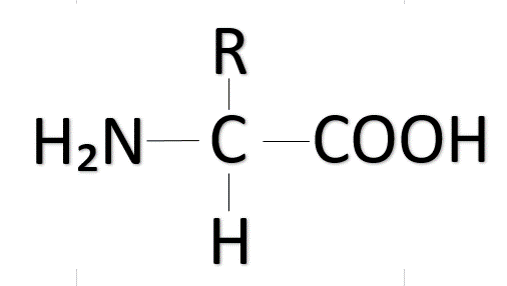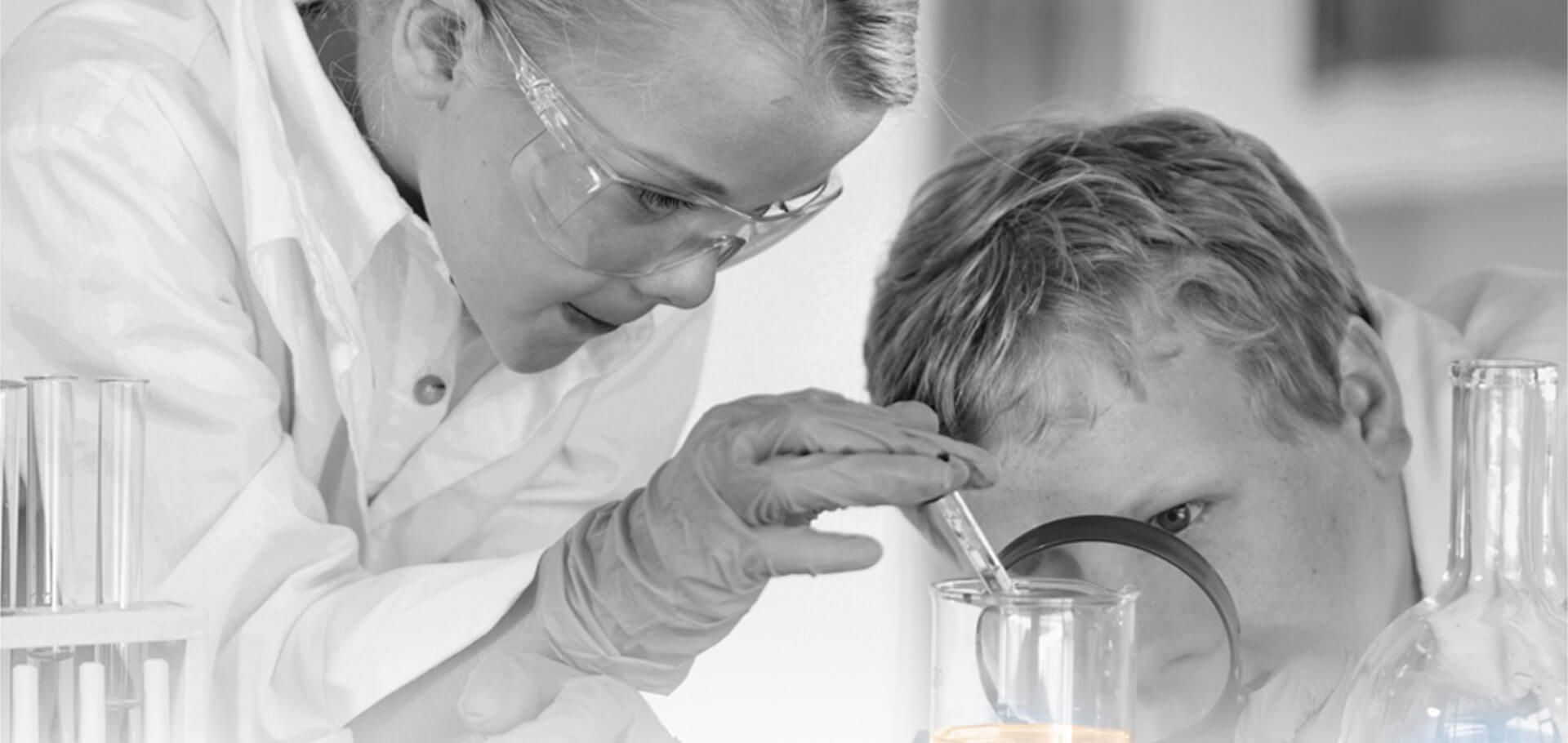20 Amino Acids that Make Up Proteins
As is popularly known, different amino acids are the main components that make up proteins. Amino acids refers to compounds whose molecules contain an amine group (-NH2) and a carboxyl group (-COOH).
Amino acids constitute a distinctive part of the human body and diet. They are immensely vital for the human body to properly function; hence it is important to understand how many amino acids compose proteins. Let’s proceed to find out how many amino acids do make up the proteins.

Structural formula of amino acids
Table of Contents
How Many Amino Acids Do Help Build Proteins?
Roughly 500 amino acids have been identified in nature, but just 20 amino acids make up the proteins found in the human body. Let’s learn about all these 20 amino acids and the types of different amino acids.
Types of All Amino Acids
All the 20 amino acids are classified into two different amino acid groups. Essential amino acids and non-essential amino acids together make up the 20 amino acids. Out of the 20 amino acids, 9 are the essential amino acids, and the others are non-essential amino acids. Let’s see each different amino acid according to their classification.
Essential amino acids
BCAA (valine, leucine and isoleucine)
Branched-chain amino acids (BCAAs) are a group of three amino acids (valine, leucine and isoleucine) that have a molecular structure with a branch. BCAAs are plentiful in muscle proteins, stimulate muscle growth in the body and provide energy during exercise.
Lysine (Lys)
Lysine is one of the most commonly mentioned essential amino acids. Foods such as bread and rice tend to be low in lysine. For example, compared to an ideal amino acid composition, wheat is low in lysine. The United Nations University carried out the research about people in developing countries where they depend on wheat for protein, and found out the lack of lysine in their diet. Not having enough lysine and other amino acids can lead to serious problems such as stunted growth and severe illness.
Threonine (Thr)
An essential amino acid that is used to make the active site of enzymes.
Phenylalanine (Phe)
An essential amino acid that is used to make many types of useful amines.
Methionine (Met)
An essential amino acid that is used to make many different substances needed in the body.
Histidine (His)
An essential amino acid that is used to make histamine.
Tryptophan (Trp)
An essential amino acid used to make many types of useful amines.
Non-Essential amino acids
Glutamine (Gln)
Glutamine is one of the most common amino acids in the body. Glutamine protects the stomach and gastrointestinal tract. In particular, glutamine is used to produce energy for the gastrointestinal tract. Glutamine promotes the metabolization of alcohol to protect the liver.
Aspartate (Asp)
Aspartate is one of the amino acids that is most usable for energy. Aspartate is one of the amino acids positioned most closely to the tricarboxylic acid (TCA) cycle in the body that produces energy. The TCA cycle is like the engine that powers cars, it is working in each cell in our bodies functions to produce energy.
Glutamate (Glu)
It is a non-essential amino acid and is the most important fuel for the gut. Kombu stock used in Japanese cooking contains glutamate, which is the base of umami and free glutamate are found in kombu, tomato and cheese.
Arginine (Arg)
Arginine plays an important role in opening up the veins to enhance blood flow. Nitric oxide that opens up the veins is made from arginine. Arginine is a useful amino acid for removing excess ammonia from the body. Arginine increases immunity.
Alanine (Ala)
Alanine supports the function of the liver. Alanine is used to make glucose that is needed by the body. Alanine improves the metabolization of alcohol.
Proline (Pro)
Proline is one of the amino acids contained in collagen that makes up skin tissue. Proline is one of the most important amino acids to the natural moisturizing factor (NMF) that keeps skin moist.
Cysteine (Cys)
Cysteine reduces the amount of black melanin pigmentation made. Cysteine is plentiful in head hair and body hair. Cysteine increases the amount of yellow melanin made instead of black melanin.
Asparagine (Asn)
An amino acid that was discovered from asparagus. Both asparagine and Aspartate are positioned close to the tricarboxylic acid (TCA) cycle that produces energy.
Serine (Ser)
An amino acid used to make phospholipids and glyceric acid.
Glycine (Gly)
A non-essential amino acid that is made in the body. Glycine is plentiful in the body. It acts as a transmitter in the central nervous system and helps regulate body functions such as locomotion and sensory perception. Glycine makes up one-third of collagen.
Tyrosine (Tyr)
Tyrosine is used to make many types of useful amines. Tyrosine is grouped as an aromatic amino acid together with phenylalanine and tryptophan.
General questions about amino acids
How many essential amino acids are there?
Out of the 20 amino acids that make up proteins, 9 are the essential amino acids, and the others are non-essential amino acids.
Are amino acids a protein?
Amino acids themselves are not protein but they are molecules which combine to form proteins. Thus amino acids and proteins are the building blocks of life.
What are BCAAs?
Branched-chain amino acids (BCAAs) are a group of three amino acids (valine, leucine and isoleucine) that have a molecular structure with a branch. BCAAs are plentiful in muscle proteins, stimulate muscle growth in the body and provide energy during exercise.
Learn more about the Ajinomoto Group
Get to know us

Unlocking amino acids’ potential: passion and a bit of luck
Some scientific discoveries happen by accident—think penicillin. In 1928 biologist Alexander Fleming returned to his lab from holiday to find mold growing in a petri dish containing a bacterium responsible for many common infections.You may also like

Eating for a healthy immune system
Summer and winter, we are exposed to extreme temperature fluctuations as we move between heated or air-conditioned environments and the outdoors. Cold air, both natural and artificial, contains less moisture and dries out our mucous membranes, exposing us to viruses that can cause colds. Before you know it, your forehead feels feverish, your throat is sore, and your nose is dripping like a leaky faucet.